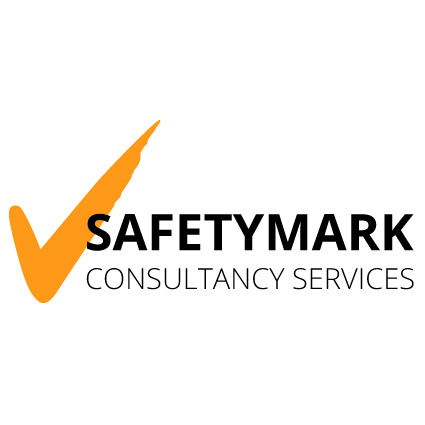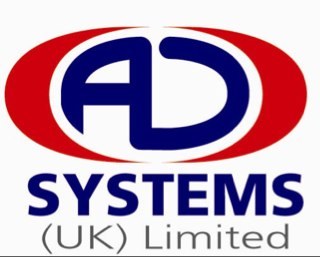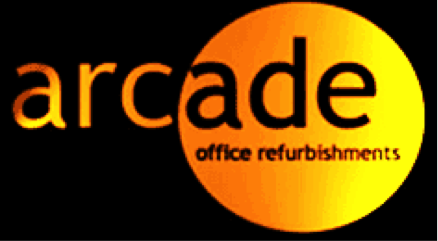Information
-
Document No.
-
Job Name
-
Client Name
-
Client Address
-
Job Address
-
Same as Client's
-
Job Location
-
Start Date
-
End Date
-
Prepared by
PLAN
-
What is the job associated with?
- Surfacing Works
- Civils Works
-
Is there anything the client has made you aware of?
- Nothing
- Restricted Access or Space
- Underground Services
- Animals, Children, Elderly, Disabled, Infirm present
- Overhead Cables
- Other
-
Activity:
Client advised: Scraping the surface in an area that could have buried services (water, gas, electricity, cable etc.)
Risk:
Safety risk: Injury through striking live services
You will need to:
- Obtain relevant service drawings
- Check the area by using a Service locating device (CAT & Genny)
- Hand dig when you are within 500mm of any known service -
Activity:
Client advised: Raising tipper bodies in an area that could have overhead electricity cables
Risk:
Safety risk: Injury through striking live overhead cables
You will need to:
- Use goalposts if on a large site
- Use a banksman to guide the vehicle
- Tip away from site and use a 2CX and dumper to move material if necessary -
Activity:
Client advised: Restricted access
Risk:
Client advised risk: The level of risk and controls will be different for each job. Discuss these with your client
You will need to:
- Consider the plant and materials you will need, the quantity needed and when and how you will safely unload, store and distribute them
- You may need to advise delivery drivers or other contractors of any site specific arrangements
- Consider how and where you can park and agree with your client
- You should not block public highways or footpaths -
Activity:
Client advised: Animals, children, elderly, disabled or infirm present
Risk:
Client advised risk: Work or poor housekeeping causing unplanned inconvenience, injury or harm
You will need to:
- Physically segregate your work area where possible
- Discuss any concerns or requirements (pets, access etc.)
- Make your work area safe when unattended and at the end of your shift
- Lock away all harmful substances, paint, tools etc.
- Store materials so they can't topple over or fall on people
- Keep shared areas tidy and free of trip hazards -
Please specify other
WORKING TOGETHER
-
Who else is working on the job with you?
- FP McCann Surfacing Squad
- FP McCann Civils Squad
- Sub-Contracted Surfacing Squad
- Sub-Contracted Civils Squad
-
How will you keep everyone on site updated during the job?
- Briefing before work starts
- Toolbox Talks as changes arise
- Written work instruction
- Other
-
Please specify other
-
Who will be responsible for ensuring the job runs safely?
-
What are your toilet, washing (basin with hot and cold running water) and rest facilities?
- Agreement to use existing client facilities
- Using temporary facilities
- Using nearby public facilities
- Other
-
Please specify other
-
Does this job need to be notified to HSE or HSENI? (i.e. Job will involve more than 500 person days or 30 working days, with more than 20 people working at the same time)
-
Risk:
Notification risk: Prosecution through not notifying the project to the HSE, which is a legal requirement
Your job needs to be notified to the HSE. The easiest way to notify the HSE or HSENI of your job is to use the electronic form F10 on HSE(NI)'s website.
IDENTIFY TASKS
-
Select the relevant task you will be undertaking on this job
- Drainage
- Kerbing
- Setting Ironwork
- Shallow Excavations
- Asphalt Laying
- Traffic Management
-
DRAINAGE - Will you be?
- Scraping the surface in an area that could have buried services
- Leaving an excavation or manhole open
- Excavating near to an existing structure such as a building, garden wall or garage
- In contact with sewage
- Using driver operated plant, such as mini diggers and dumpers
- Working in an occupied home or workplace
- Mixing or using screeds, mortar or concrete on site
- Pumping screeds or concrete
- Kneeling for prolonged periods on hard or uneven surfaces
- Using epoxy resins, additives, or other chemicals
-
Activity:
Scraping the surface in an area that could have buried services (water, gas, electricity, cable etc.)
Risk:
Safety risk: Injury through striking live services
You will need to:
- Obtain relevant service drawings
- Check the area by using a Service locating device (CAT & Genny)
- Hand dig when you are within 500mm of any known service -
Activity:
Leaving an excavation or manhole open
Risk:
Safety risk: People falling in
You will need to:
- Fit temporary covers over open manholes, inspection chambers etc. and erect barriers or guards around the edge that are strong enough to take a person's weight -
Activity:
Excavating near to an existing structure such as a building, garden wall or garage
Risk:
Safety risk: Sudden collapse due to undermining or weakening the existing structure
You will need to:
- Make sure structures are not undermined, dig well away from them or install suitable temporary works support
! If in doubt seek advice from a structural engineer ! -
Activity:
In contact with sewage
Risk:
Health risk: Weil's disease or Leptospirosis - starts as mild illness similar to flu but left untreated can be fatal
You will need to:
- Wear protective clothing such as rubber or non-absorbent gloves
- Wash hands after any contact - good personal hygiene is essential -
Activity:
Using driver operated plant, such as mini diggers and dumpers
Risk:
Safety risk: Plant overturning, striking other people, overcome by exhaust fumes/asphyxiation
You will need to:
- Only operate the plant if you are competent (blend of knowledge, ability, training and experience)
- Keep others away from plant movements and traffic routes
- Be aware of crush zones (mini diggers slewing near buildings)
- Avoid driving close to excavations
- Only operate the plant for which it is designed for
- Be aware that exhaust fumes are heavier than air and can quickly fill spaces such as excavations and basements. Regularly 'stir the air' or provide mechanical ventilation/extraction -
Activity:
Working in an occupied home or workplace
Risk:
Safety risk: Injury to homeowners, children, elderly, others
You will need to:
- Ensure you leave the work areas safe and tidy before you leave each day
- Check nothing can topple or fall over, cover any holes or voids, and don't leave hazardous substances lying around
- Prevent access to areas that are hazardous such as excavations, open floors, scaffolding, fixed ladders etc. -
Activity:
Mixing or using screeds, mortar or concrete on site
Risk:
Health risk: Manual handling, dermatitis and cement burns
Safety risk: Crushed if mixer topples, eye injuries, caught in moving parts, electric shock
You will need to:
- Locate mixer on firm level ground
- Ensure mixer is fully guarded and guards are in place during operation
- Protect electrical leads and use an RCD / circuit breaker
- Ensure that mixer is positioned to allow the shortest possible route, free from obstructions, for operatives carrying either bags of or mixed cement
- Use cement or cement containing products by their use-by date
- Avoid direct skin contact - wear non-absorbent CE marked gloves when handling wet cement and do not kneel on wet screed unless wearing suitable protective clothing such as waterproof trousers and footwear
- Have good washing facilities on site, with hot and cold water, soap and basins large enough to wash forearms
- Have emergency eyewash to hand
! Ensure washout does not enter drains or watercourses ! -
Activity:
Pumping screeds or concrete
Risk:
Health risk: Noise, vibration, dermatitis and cement burns
Safety risk: Injuries due to sudden bursting of hoses or struck by screed / concrete at high pressure, caught in moving parts of pump, electric shock
You will need to:
- Ensure the mixer is positioned to allow the shortest possible route, free from obstructions, for operatives carrying either bags of or mixed cement
- Locate screed pump on firm, level ground and use stabilisers if fitted
- Set up a safety exclusion zone
- Ensure pump is fully guarded and guards are in place during operation
- Ensure delivery hoses are in good condition and purpose designed securing pins in place on all hose couplings
- Protect electrical leads and use an RCD / circuit breaker
! If hiring a concrete pump, additional controls will be required due to the high risk operation, such as high pressures, blockages, vehicle / wagon movements. Workers may need additional information, instruction, training or supervision ! -
Activity:
Kneeling for prolonged periods on hard or uneven surfaces
Risk:
Health risk: Chronic knee pain leading to permanent damage
You will need to:
- Use kneeling pads, kneeling mats or cushions and padded trousers -
Activity:
Using epoxy resins, additives, or other chemicals
Risk:
Health risk: Breathing in harmful fumes, damage skin, eyes and respiratory tract
You will need to:
- Check labels and data sheets for the necessary controls to follow when using hazardous substances including PPE such as gloves, clothing and eye protection -
KERBING - Will you be?
- Handling kerb units
- Scraping the surface in an area that could have buried services
- Using driver operated plant
- Mixing and using mortar or concrete on site
- Pumping screeds or concrete
- Kneeling for prolonged periods on hard or uneven surfaces
- Working in an occupied home or workplace
-
Activity: Handling kerb units
Risk:
Safety risk: Injuries sustained through Manual Handling
You will need to:
- Use vacuum grab with 2CX or proprietary lifting grab
- Follow industry guidelines on kerbing safely
- Offload kerb units as close to final position as possible -
Activity:
Scraping the surface in an area that could have buried services (water, gas, electricity, cable etc.)
Risk:
Safety risk: Injury through striking live services
You will need to:
- Obtain relevant service drawings
- Check the area by using a Service locating device (CAT & Genny)
- Hand dig when you are within 500mm of any known service -
Activity:
Using driver operated plant, such as mini diggers and dumpers
Risk:
Safety risk: Plant overturning, striking other people, overcome by exhaust fumes/asphyxiation
You will need to:
- Only operate the plant if you are competent (blend of knowledge, ability, training and experience)
- Keep others away from plant movements and traffic routes
- Be aware of crush zones (mini diggers slewing near buildings)
- Avoid driving close to excavations
- Only operate the plant for which it is designed for
- Be aware that exhaust fumes are heavier than air and can quickly fill spaces such as excavations and basements. Regularly 'stir the air' or provide mechanical ventilation/extraction -
Activity:
Mixing or using screeds, mortar or concrete on site
Risk:
Health risk: Manual handling, dermatitis and cement burns
Safety risk: Crushed if mixer topples, eye injuries, caught in moving parts, electric shock
You will need to:
- Locate mixer on firm level ground
- Ensure mixer is fully guarded and guards are in place during operation
- Protect electrical leads and use an RCD / circuit breaker
- Ensure that mixer is positioned to allow the shortest possible route, free from obstructions, for operatives carrying either bags of or mixed cement
- Use cement or cement containing products by their use-by date
- Avoid direct skin contact - wear non-absorbent CE marked gloves when handling wet cement and do not kneel on wet screed unless wearing suitable protective clothing such as waterproof trousers and footwear
- Have good washing facilities on site, with hot and cold water, soap and basins large enough to wash forearms
- Have emergency eyewash to hand
! Ensure washout does not enter drains or watercourses ! -
Activity:
Pumping screeds or concrete
Risk:
Health risk: Noise, vibration, dermatitis and cement burns
Safety risk: Injuries due to sudden bursting of hoses or struck by screed / concrete at high pressure, caught in moving parts of pump, electric shock
You will need to:
- Ensure the mixer is positioned to allow the shortest possible route, free from obstructions, for operatives carrying either bags of or mixed cement
- Locate screed pump on firm, level ground and use stabilisers if fitted
- Set up a safety exclusion zone
- Ensure pump is fully guarded and guards are in place during operation
- Ensure delivery hoses are in good condition and purpose designed securing pins in place on all hose couplings
- Protect electrical leads and use an RCD / circuit breaker
! If hiring a concrete pump, additional controls will be required due to the high risk operation, such as high pressures, blockages, vehicle / wagon movements. Workers may need additional information, instruction, training or supervision ! -
Activity:
Kneeling for prolonged periods on hard or uneven surfaces
Risk:
Health risk: Chronic knee pain leading to permanent damage
You will need to:
- Use kneeling pads, kneeling mats or cushions and padded trousers -
Activity:
Working in an occupied home or workplace
Risk:
Safety risk: Injury to homeowners, children, elderly, others
You will need to:
- Ensure you leave the work areas safe and tidy before you leave each day
- Check nothing can topple or fall over, cover any holes or voids, and don't leave hazardous substances lying around
- Prevent access to areas that are hazardous such as excavations, open floors, scaffolding, fixed ladders etc. -
SETTING IRONWORK - Will you be?
- Manually Handling Ironwork
- Using Bedding Mortars/Grout/Epoxy Resins/Concrete
- Traffic Management
- Using Plate Compactors
- Working in an occupied home or workplace
- Kneeling for prolonged periods on hard or uneven surfaces
-
Activity:
Manually Handling Ironwork
Risk: Manual handling of heavy items
Safety risk: Injuries sustained through incorrect manual handling
You will need to:
- Use proprietary manhole lifters
- Plan to unload the heavy items as close to the work area as possible
- Ensure operatives are trained
- Use brick guards to prevent falls of materials onto others
- Stack pallets of bricks and blocks on firm level ground and not more than two high
- Keep work areas and walkways tidy and clear of rubble, materials, trailing leads and rubbish
- Wear safety footwear -
Activity:
Using Bedding Mortars/Grout/Epoxy Resins/Concrete
Health Risk:
Dermatitis and cement burns, Breathing in harmful fumes, damage skin, eyes and respiratory tract
Safety Risk:
Crushed if mixer topples, eye injuries, caught in moving parts, electric shock
You will need to:
- Check labels and data sheets for the controls to follow including necessary PPE such as gloves and eye protection
- Always use in a well-ventilated area
- Use cement or cement containing products within the use-by date
- Avoid direct skin contact - wear non-absorbent CE marked gloves when handling mortar/grouts/epoxy resins
- Have good washing facilities on site, with hot and cold water, soap and basins large enough to wash forearms
- Have an emergency eyewash to hand
- Locate cement mixer on firm, level ground
- Ensure mixer is fully guarded and guards in place during operation
- Protect electrical leads and use an RCD / circuit breaker
! Ensure washout does not enter drains or watercourses ! -
Activity:
Controlling Traffic
Safety Risk: Injuries sustained through being hit by vehicle or other road user
You will need to:
- Use traffic control measures appropriate to local traffic conditions (consult ACoP and Chapter 8))
- If necessary, temporarily close off road (liaison with local authority required) -
Activity:
Using hand held vibratory plate compactors
Risk:
Health risk: Permanent damage to nerves and blood supply to fingers, wrists and hands known as vibration white finger or hand arm vibration syndrome HAVS
You will need to:
- Reduce the amount of time on the compactor
- Rotate the work with others
- Keep your hands warm and dry
- When purchasing or hiring a compactor select one with a low vibration rating
- TIP: Don't grip too tightly - let the compactor do the work
! If your hands tingle after using the compactor it's an early warning sign. Repetitiveness can lead to permanent damage ! -
Activity:
Working in an occupied home or workplace
Risk:
Safety risk: Injury to homeowners, children, elderly, others
You will need to:
- Ensure you leave the work areas safe and tidy before you leave each day
- Check nothing can topple or fall over, cover any holes or voids, and don't leave hazardous substances lying around
- Prevent access to areas that are hazardous such as excavations, open manholes, freshly laid asphalt etc. -
Activity:
Kneeling for prolonged periods on hard or uneven surfaces
Risk:
Health risk: Chronic knee pain leading to permanent damage
You will need to:
- Use kneeling pads, kneeling mats or cushions and padded trousers -
SHALLOW EXCAVATIONS - Will you be?
- Scraping the surface in an area that could have buried services
- Leaving an excavation or manhole open
- Excavating near to an existing structure such as a building, garden wall or garage
- In contact with sewage
- Using driver operated plant, such as mini diggers and dumpers
- Working in an occupied home or workplace
- Mixing or using screeds, mortar or concrete on site
- Pumping screeds or concrete
- Kneeling for prolonged periods on hard or uneven surfaces
- Using epoxy resins, additives, or other chemicals
-
Activity:
Scraping the surface in an area that could have buried services (water, gas, electricity, cable etc.)
Risk:
Safety risk: Injury through striking live services
You will need to:
- Obtain relevant service drawings
- Check the area by using a Service locating device (CAT & Genny)
- Hand dig when you are within 500mm of any known service -
Activity:
Leaving an excavation or manhole open
Risk:
Safety risk: People falling in
You will need to:
- Fit temporary covers over open manholes, inspection chambers etc. and erect barriers or guards around the edge that are strong enough to take a person's weight -
Activity:
Excavating near to an existing structure such as a building, garden wall or garage
Risk:
Safety risk: Sudden collapse due to undermining or weakening the existing structure
You will need to:
- Make sure structures are not undermined, dig well away from them or install suitable temporary works support
! If in doubt seek advice from a structural engineer ! -
Activity:
In contact with sewage
Risk:
Health risk: Weil's disease or Leptospirosis - starts as mild illness similar to flu but left untreated can be fatal
You will need to:
- Wear protective clothing such as rubber or non-absorbent gloves
- Wash hands after any contact - good personal hygiene is essential -
Activity:
Using driver operated plant, such as mini diggers and dumpers
Risk:
Safety risk: Plant overturning, striking other people, overcome by exhaust fumes/asphyxiation
You will need to:
- Only operate the plant if you are competent (blend of knowledge, ability, training and experience)
- Keep others away from plant movements and traffic routes
- Be aware of crush zones (mini diggers slewing near buildings)
- Avoid driving close to excavations
- Only operate the plant for which it is designed for
- Be aware that exhaust fumes are heavier than air and can quickly fill spaces such as excavations and basements. Regularly 'stir the air' or provide mechanical ventilation/extraction -
Activity:
Working in an occupied home or workplace
Risk:
Safety risk: Injury to homeowners, children, elderly, others
You will need to:
- Ensure you leave the work areas safe and tidy before you leave each day
- Check nothing can topple or fall over, cover any holes or voids, and don't leave hazardous substances lying around
- Prevent access to areas that are hazardous such as excavations, open floors, scaffolding, fixed ladders etc. -
Activity:
Mixing or using screeds, mortar or concrete on site
Risk:
Health risk: Manual handling, dermatitis and cement burns
Safety risk: Crushed if mixer topples, eye injuries, caught in moving parts, electric shock
You will need to:
- Locate mixer on firm level ground
- Ensure mixer is fully guarded and guards are in place during operation
- Protect electrical leads and use an RCD / circuit breaker
- Ensure that mixer is positioned to allow the shortest possible route, free from obstructions, for operatives carrying either bags of or mixed cement
- Use cement or cement containing products by their use-by date
- Avoid direct skin contact - wear non-absorbent CE marked gloves when handling wet cement and do not kneel on wet screed unless wearing suitable protective clothing such as waterproof trousers and footwear
- Have good washing facilities on site, with hot and cold water, soap and basins large enough to wash forearms
- Have emergency eyewash to hand
! Ensure washout does not enter drains or watercourses ! -
Activity:
Pumping screeds or concrete
Risk:
Health risk: Noise, vibration, dermatitis and cement burns
Safety risk: Injuries due to sudden bursting of hoses or struck by screed / concrete at high pressure, caught in moving parts of pump, electric shock
You will need to:
- Ensure the mixer is positioned to allow the shortest possible route, free from obstructions, for operatives carrying either bags of or mixed cement
- Locate screed pump on firm, level ground and use stabilisers if fitted
- Set up a safety exclusion zone
- Ensure pump is fully guarded and guards are in place during operation
- Ensure delivery hoses are in good condition and purpose designed securing pins in place on all hose couplings
- Protect electrical leads and use an RCD / circuit breaker
! If hiring a concrete pump, additional controls will be required due to the high risk operation, such as high pressures, blockages, vehicle / wagon movements. Workers may need additional information, instruction, training or supervision ! -
Activity:
Kneeling for prolonged periods on hard or uneven surfaces
Risk:
Health risk: Chronic knee pain leading to permanent damage
You will need to:
- Use kneeling pads, kneeling mats or cushions and padded trousers -
Activity:
Using epoxy resins, additives, or other chemicals
Risk:
Health risk: Breathing in harmful fumes, damage skin, eyes and respiratory tract
You will need to:
- Check labels and data sheets for the necessary controls to follow when using hazardous substances including PPE such as gloves, clothing and eye protection -
ASPHALT LAYING - Will you be?
- Using driver operated plant, such as spreaders, loading shovels and dumpers
- Using traffic control
- Using bitumen boilers
- Working in an occupied home or workplace
-
Activity:
Using driver operated plant, such as spreaders, loading shovels and dumpers
Risk:
Safety risk: Plant overturning, striking other people, overcome by exhaust fumes/asphyxiation
You will need to:
- Only operate the plant if you are competent (blend of knowledge, ability, training and experience)
- Keep others away from plant movements and traffic routes
- Be aware of crush zones (mobile plant near buildings)
- Avoid driving close to excavations
- Only operate the plant for which it is designed for
- Be aware that exhaust fumes are heavier than air and can quickly fill spaces such as excavations and basements. Regularly 'stir the air' or provide mechanical ventilation/extraction -
Activity:
Controlling Traffic
Safety Risk: Injuries sustained through being hit by vehicle or other road user
You will need to:
- Use traffic control measures appropriate to local traffic conditions (consult ACoP and Chapter 8))
- If necessary, temporarily close off road (liaison with local authority required) -
Activity:
Using bitumen boilers
Risk:
Safety risk: Burns
You will need to:
- Keep the area clean and tidy to prevent slips and trips
- Ensure only trained operatives use the boiler
- Wear appropriate PPE (elbow length heat resistant gloves etc.)
- Keep others away (particularly any residents) -
Activity:
Working in an occupied home or workplace
Risk:
Safety risk: Injury to homeowners, children, elderly, others
You will need to:
- Ensure you leave the work areas safe and tidy before you leave each day
- Check nothing can topple or fall over, cover any holes or voids, and don't leave hazardous substances lying around
- Prevent access to areas that are hazardous such as excavations, open floors, scaffolding, fixed ladders etc.
ORGANISE HEALTH RISKS
-
Will you be?
- Lifting and carrying heavy or awkward materials and equipment
- Using hand held vibratory tools and equipment? Such as drills, breakers, cut-off saws etc.
- Using noisy tools, plant and equipment or working in a noisy work place
- Working outside in sunny weather
- Using hazardous materials such as hot bitumen, cement, epoxy resins etc.
-
Activity:
Lifting and carrying heavy or awkward materials and equipment
Risk:
Health risk: Manual handling injuries and repetitive strains such as back pain
You will need to:
Think about ways to reduce the risk by:
- Ordering materials cut to size
- Splitting the load if possible
- Ask someone to help with the lift
- Use lifting aids (wheel barrow, hoist, sack barrow) -
Activity:
Using hand held vibratory tools and equipment? Such as drills, breakers, grinders, cut-off saws, sanders, chasers
Risk:
Health risk: Permanent damage to nerves and blood supply to fingers, wrists and hands known as vibration white finger or hand arm vibration syndrome HAVS
You will need to:
- Reduce the amount of time on the tools
- Rotate the work with others
- Keep your hands warm and dry
- Keep drill bits, points and chisels sharp
- When purchasing or hiring tools and equipment select those with low vibration ratings
- TIP: Don't grip too tightly - let the tool do the work
! If your hands tingle after using equipment it's an early warning sign. Repetitiveness can lead to permanent damage ! -
Activity:
Using noisy tools, plant and equipment or working in a noisy work place
Risk:
Health risk: Permanent damage or loss to hearing / or ringing in ears known as tinnitus
You will need to:
- Wear hearing protection (i.e. ear plugs or ear defenders/muffs) every time you use noisy tools and equipment even for short periods or if you work in a noisy area -
Activity:
Working outside in sunny weather
Risk:
Health risk: Over exposure to sun resulting in skin cancer
You will need to:
- Cover up bare skin (keep your top on - this is FP McCann company policy)
- Use high factor sun cream
- Drink plenty of fluids to avoid dehydration -
Activity:
Using hazardous materials such as hot bitumen, cement, epoxy resins etc.
Risk:
Health risk: Risk developing skin conditions such as dermatitis, bitumen burns or cement burns
You will need to:
- Avoid contact with skin
- Use the correct gloves
- Wash any cement off your skin immediately
- Follow any hazard label instructions
ORGANISE SAFETY RISKS
-
Will you be?
- Carrying out 'hot work' with a naked flame or using items that could produce sparks or heat (bitumen boiler, cut-off saw etc.)
- Using or storing flammable materials or substances such as LPG, petrol or solvents
-
Activity:
Carrying out 'hot work' with a naked flame or using items that could produce sparks or heat (bitumen boiler, cut-off saw, etc.)
Risk:
Safety risk: Fire or explosion
You will need to:
- Remove or protect flammable materials and keep an appropriate fire extinguisher nearby when carrying out 'hot work'
- Position bitumen boilers, soldering irons and gas-rings on non-combustible stands
- Cease 'hot work' activities at least one hour before the end of the day's work and regularly monitor the area and surrounding structure in the intervening time -
Activity:
Using or storing flammable materials or substances such as LPG, petrol or solvents
Risk:
Safety risk: Fire or explosion
You will need to:
- Make sure petrol and other flammable substances are stored in correct containers and used away from sources of ignition
- Never refuel petrol or diesel-powered equipment and plant whilst it is still hot
- Store all gas cylinders so that they cannot fall or roll and transport cylinders in vehicles with good ventilation
- Ensure flashback arrestors are fitted when using mixed gases (such as when welding)
! If gas cylinders are being heated in a fire, call the fire brigade and immediately evacuate the area !
ORGANISE ENVIRONMENTAL RISKS
-
Will you be?
- Using or storing materials
- Storing diesel, petrol, oil or other hazardous liquids on site
- Working in a residential area or near other neighbours such as schools and shops
- Mixing concrete or mortar
- Removing or cutting back trees, hedges or vegetation
-
Activity:
Using or storing materials
Risk:
Environmental risk: Every year millions of pounds are wasted by poor management of materials that end up being damaged or just thrown away
You will need to:
- Store materials properly and safely to prevent damage before use e.g. bags of cement
- Keep significant off-cuts for reuse and know the correct place to stockpile and protect materials for reuse
- Consider the quantity of material to be used before ordering or opening a pack and use it all before opening a new pack -
Activity:
Storing diesel, petrol, oil or other hazardous liquids on site
Risk:
Environmental risk: Spills polluting the ground or nearby watercourses or drains
You will need to:
- Ensure that bulk fuel and oil storage tanks are bunded with a capacity of 110%, kept secure (locked when not in use) and checked regularly
- Ensure all containers are stored in secure, bunded areas with a capacity of at least 25% more than the total volume of the containers
- Refuel in controlled areas, where possible, and place drip trays or absorbent mats under static plant -
Activity:
Working in a residential area or near other neighbours such as schools and shops
Risk:
Environmental risk: Causing a statutory nuisance or just getting a bad reputation
You will need to:
- Be a good neighbour - always be polite and considerate
- Arrange for deliveries when traffic flow is likely to be low and avoid school arrival and departure times
- Keep disruption from the site to a minimum by minimising dust, noise and vibration, such as damping down and using wet cutting to reduce the potential for creating dust
- Maintain good housekeeping by keeping roads and pathways clean
- Let people know in advance of any noisy operations, especially at night and on weekends
- Environmental Health Officers can issue notices to stop you working if you are creating a statutory nuisance -
Activity:
Mixing concrete or mortar
Risk:
Environmental risk: Illegally discharging into or polluting drains or nearby watercourses
You will need to:
- Carry out mixing and batching works in areas well away from watercourses, gullies and drains
- Use designated wash out areas and ensure that delivery drivers (of concrete or similar) are aware of where they can wash out
- You must seek approval before you pump water into drains or watercourses
///Note: Where there is a requirement to discharge effluent from any construction activity to drainage systems, watercourses or rivers and streams, an application for consent to discharge must be made to the relevant authority. The issuing authority for discharges to foul sewers is usually regulated by the local water company, whereas any discharges to surface water systems, rivers lakes or ponds would be regulated by the NIEA/// -
Activity:
Removing or cutting back trees, hedges or vegetation
Risk:
Environmental risk: Disturbing protected wildlife
You will need to:
- Check with the Local Authority as some trees and hedges are protected and have a preservation order
- At certain times in the year they may contain nesting birds, which should not be disturbed as they are protected by law














